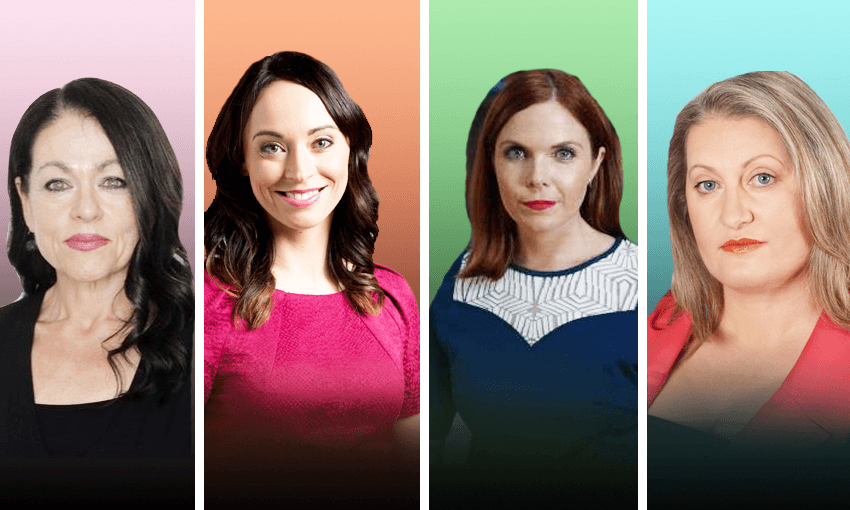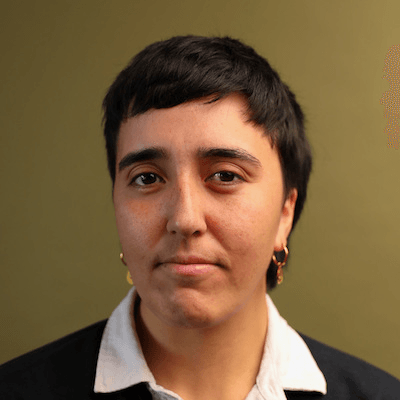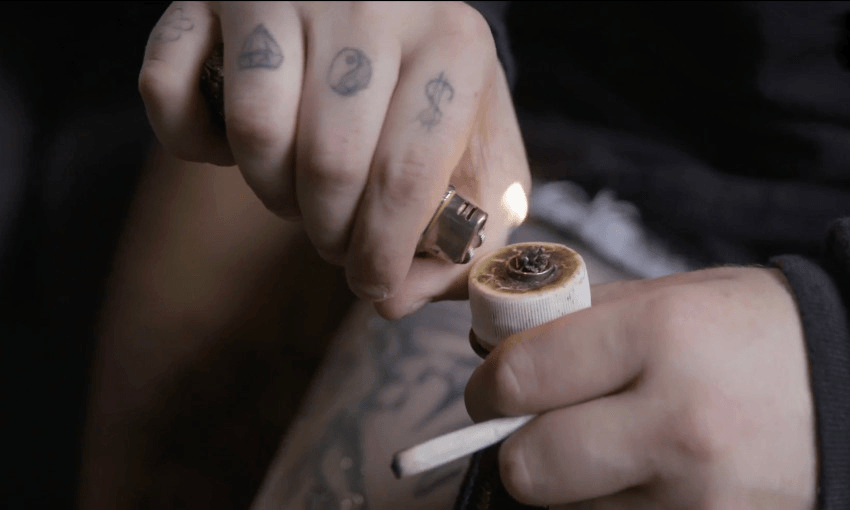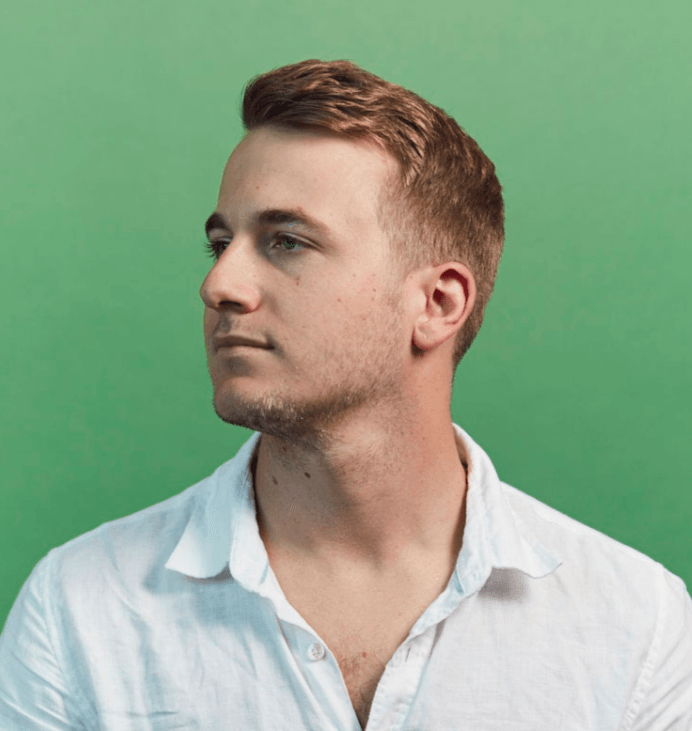The appointment of Jessica Mutch and Tova O’Brien to TV’s top parliamentary positions means the leading editors in the press gallery are all women. Madeleine Chapman asks four of them whether that matters, and about the broader state of play in 2018.
With the announcement that Tova O’Brien and Jessica Mutch will assume the role of political editor at Newshub and TVNZ respectively, the top five media outfits – Newshub, TVNZ, NZ Herald, Stuff and RNZ – in the parliamentary press gallery are now being led by women. Unprecedented, yes, but, say four of them, that’s where the noteworthiness ends.
How would you respond to criticisms that the media have been swept up in Jacindamania and aren’t being as critical of the new government as they should be?
Tracy Watkins, Stuff: I think it’s just nonsense, really. A number of us have been around here for a number of changes in government and each change is the same. We’ll hold politicians to account when those moments arise. I just think it’s the usual thing that people will say when there’s a change in government and it’s a government they’re ideologically opposed to. If I write a comment piece I’ll have as many people accusing me of being a leftie as in John Key’s camp or Bill English’s camp or National’s camp. And a lot of the time it’s based on their particular ideology rather than what I’ve actually written. I think people read into what you write from their own perspective. Yes, we’ll call governments and politicians to account but not always in a way that will be applauded by the other side.
Do I think we are less critical? No, I don’t. I actually really strongly disagree with people who say that back in the day the press gallery used to be tougher or dig up more stories. I think if you dig up the amount of news and coverage, including critical coverage that’s coming out of the press gallery on a daily, and even hourly, basis, I think it’s an extraordinary level of journalism and it’s good journalism. There was a Karl du Fresne column recently that was critical of the media today and if I think back to when I first started in the gallery and even before that, there was a much cosier relationship between journalists and politicians which doesn’t exist now.
Jane Patterson, RNZ: I can only speak for Radio New Zealand but we were very conscious, particularly in the election campaign, that that could be a risk. Even going so far as referring to the prime minister or the Labour leader at the time as Jacinda on air, rather than Ms Ardern or the Labour leader or the prime minister. So the language, even, was very important.
I’ve certainly been very conscious that Ms Ardern and the cabinet should be absolutely held to the same standard as the National party and that cabinet. In fact, with all of the different changes that are coming down the line under this government, we are scrutinising everything that they do. While politicians certainly have different personal styles – Ms Ardern is, I suppose, charismatic but then John Key was as well – I would argue that the same level of scrutiny has been and will continue to be applied to all political leaders and prime ministers.
Jessica Mutch, TVNZ: I think in the press gallery it’s always your job to hold politicians to account and I don’t really see how that’s changed. Everyone adjusts when a new prime minister comes in. We saw it happen with Helen Clark, we saw it happen with John Key, and we saw it happen with Bill English to a certain extent. The role of the gallery is always to hold to account and I think we’re doing that.
Tova O’Brien, Newshub: The media has been doing the same thing the media always does in the press gallery. It’s a team of some of the best journalists in the country who continue to hold the government to account and I’d call BS on [that]. I think people respond to policy in different ways but I don’t think the media has been doing their job in any lesser way than they have in the past under any other government.
Budget constraints and cross-platform demands are the new normal in journalism. How has political reporting changed since you began in the press gallery?
Tracy Watkins: I think there’s been massive change. There is much more immediacy in news during the election campaign. A lot of the time during big news events we run a live blog which basically feeds the public appetite for much faster news and to get the news as it happens. In a way it feeds on itself because people are getting used to seeing that, and having instant access to news as it happens.
Where things are different now is everything happens very quickly and we’re able to layer that with a whole lot of analysis and commentary and great video and visuals that make a whole package. You can get that all out there to an audience that almost has an insatiable appetite for politics. I think it’s actually great because there’s a huge appetite for political news. If there’s a big political story these days it always rates extremely well on Stuff. Our live blogs always rate extremely well when there are big events happening so I actually think it’s brilliant, that instant ability to access political news as it happens has really driven a lot of that demand.
Jane Patterson: We do have to prioritise and we can’t do all of the stories that we used to. We have to be very sharply focussed with our resources. In saying that – especially for RNZ – I consider it still crucial that we cover parliament, that we cover select committees, that we cover the proceedings of parliament as such because that’s where the stories are. MPs passing laws has the most impact on people and if we’re not covering what they’re doing then that’s their accountability gone.
In terms of the multimedia, resources are probably spread more thin, more than they were, just because of the extra workload in delivering that resource. But we also want to focus on original journalism and breaking stories away from the more procedural, the legislation and the select committee. So that’s a big focus for us as an organisation.
Jessica Mutch: I reckon the press gallery is the purest form of journalism in lots of ways. It’s the talking to people, it’s the relationships, it’s the history, it’s about having covered an issue for a long time, it’s about being able to see these politicians when they first come in and to grow and things like that. I think that there are always changing and evolving pressures in journalism, like lots of other industries, but in the press gallery we’re almost seeing more resources thrown in as media companies are seeing what a vital part of the organisation it is.
With TVNZ, we’ve now got more staff online because it’s multimedia and faster paced. If you ask the other guys I think they’ll probably say the same thing, that they actually have more resources there now because that’s what’s expected. For politics, there’s more resources being pumped in because there’s so many stories there, especially over the election as well. There’s such a huge focus and all the attention is on politics.
Tova O’Brien: Our team has grown significantly in the press gallery since I was last in there. When I was in there it was just me, Paddy [Gower], and Brook Sabin. Now we’ve got a team of six in the press gallery, all working across platforms so some more focused on one platform than another. There are more of us and it also pushes us to look into the stories that we’re working on in different ways. If you’re working on an online or digital piece alongside a television piece and also doing radio, you’re able to dissect and delve into it in different ways. I don’t think there’s any harm done there as long as you’re still able to focus on the the stories and things you need to do for the day.
You may have read it already but Mark Jennings has written suggesting that with the five leading political editors being women, coverage might become “less aggressive” or “kinder”.
Tracy Watkins: (laughs) I have! It’s caused a bit of controversy. I have to say I’ve been political editor since 2005 and Audrey Young at the Herald probably predates me by a little bit. At the time I came into the press gallery, Linda Clark was political editor at TVNZ, Jane Young around that time was political editor at TV3, Jane Patterson has been a political editor for a number of years. Has anything changed? No. Not as far as I know. And, no, it isn’t a move towards softer press gallery. It’s just a case of it’s the best people who put their hand up for the job actually happen to get it. That’s really all you can say about that.
I think Mark Jennings’s interest is marked by the fact that the two TV channels have both appointed women. But at the same time, as I say, this is not the first time, so it shouldn’t be a big surprise and it shouldn’t signal anything other than that there’s changes in the press gallery, which happen, often after election years.
It’s probably coincidental that at this point there’s all females in the press room but there’s gonna be times when there are, there’s gonna be times when they’re not. It’s just the way it is.
Jane Patterson: I absolutely reject that premise. In fact, we’ve had political editors, including Tracy Watkins and Audrey Young, in those positions for a number of years so I can’t see why they would suddenly change their approach – nor would I – because of changes in other offices. I would take issue with any suggestion that a female political editor rather than a male political editor would apply any less scrutiny.
I think any politician dealing with women political editors in the gallery would not come away thinking that they had been treated more kindly or softly or held to a lower degree of account than had they been dealing with a male political editor.
Jessica Mutch: Maybe if they spent some time in the media scrums they might not feel that way. I know I definitely didn’t feel that way when I was doing Q & A. You always want to challenge the person you’re speaking with, that’s what you’re there for. My job is always to challenge the person you’re interviewing and get the best information to the public and I think if you asked some of the politicians, I don’t feel like they’d think they’re getting a soft run.
Tova O’Brien: Patrick Gower and Duncan Garner were both my bosses and my mentors and I’m incredibly proud to be following in their footsteps. I’m also incredibly proud to be following in the footsteps of people like Linda Clark and Jane Young and other women political reporters and political editors who have been hugely supportive of me. I’m very proud to be a part of the women political reporting legacy that the press gallery has.
All newsrooms, houses of parliament, governments should reflect the country and the people they work for and should reflect the women they work for as well. Here in the UK we’re marking 100 years since some women gained the right to vote. With the Time’s Up campaigns and the #MeToo movement, we’re seeing that there is a shift that needs to happen. Unfortunately it needs to happen. It shouldn’t still need to happen. I think that attributing sweeping generalisations or universal attributes to all women is inaccurate and wrong. I don’t think that a woman politician is going to take a softer or a kinder approach to politics than a male politician. I don’t think a woman political editor is going to take a softer or kinder approach to politics than a male political editor would do. I think it completely depends on the character and the person and I don’t think we assign attributes like that universally to a gender.
I think there’ll be changes in so far as we’re all different people and taking up different roles. It’s wonderful that there are women in those roles and reflecting the people we are reporting for. I don’t think that’s going to make any difference based on our gender. I have a huge amount for respect for Mark Jennings too and I’m not slamming what he said but I don’t think it’s helpful or accurate to say that all us women are the same, certainly not that we’re going to soften things up or do anything in one way or another.
This section is made possible by Simplicity, the online nonprofit KiwiSaver plan that only charges members what it costs, nothing more. Simplicity is New Zealand’s fastest growing KiwiSaver scheme, saving its 10,500 plus investors more than $3.5 million annually. Simplicity donates 15% of management revenue to charity and has no investments in tobacco, nuclear weapons or landmines. It takes two minutes to join.





